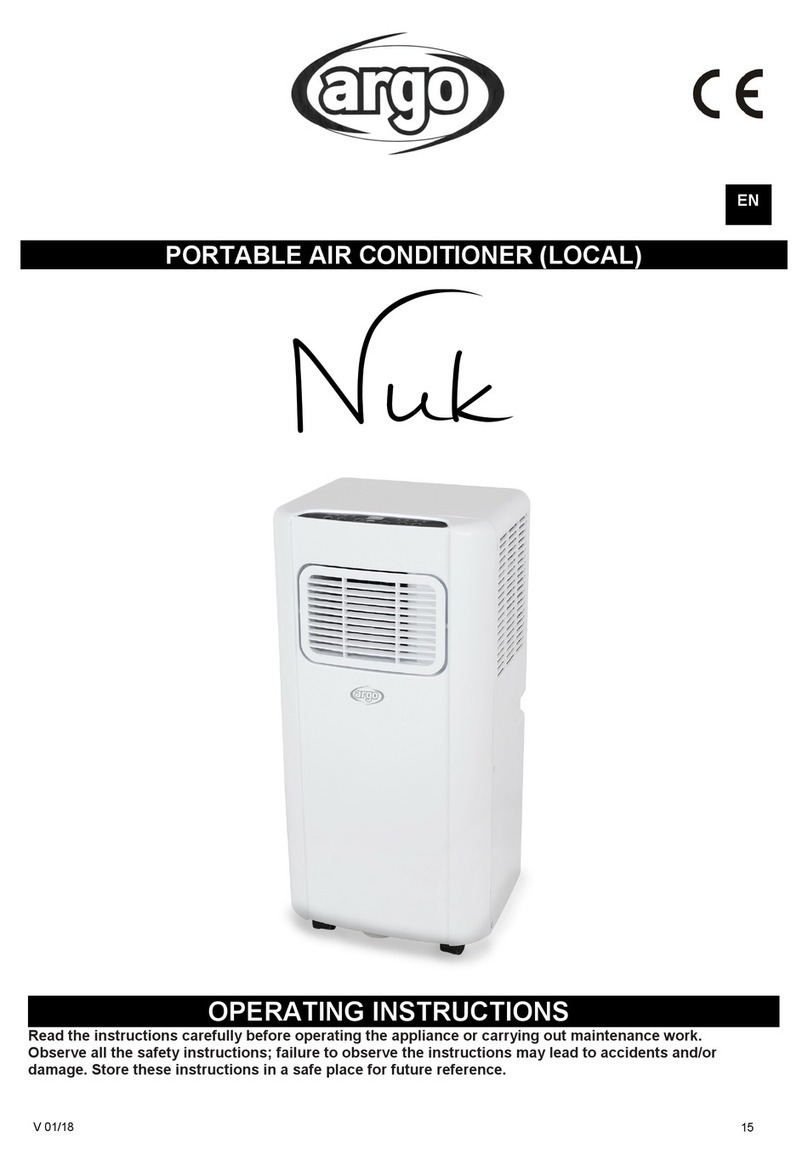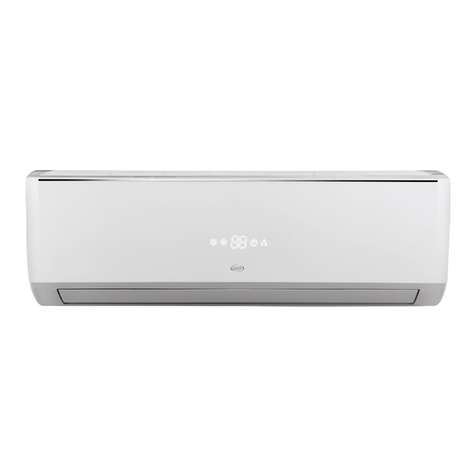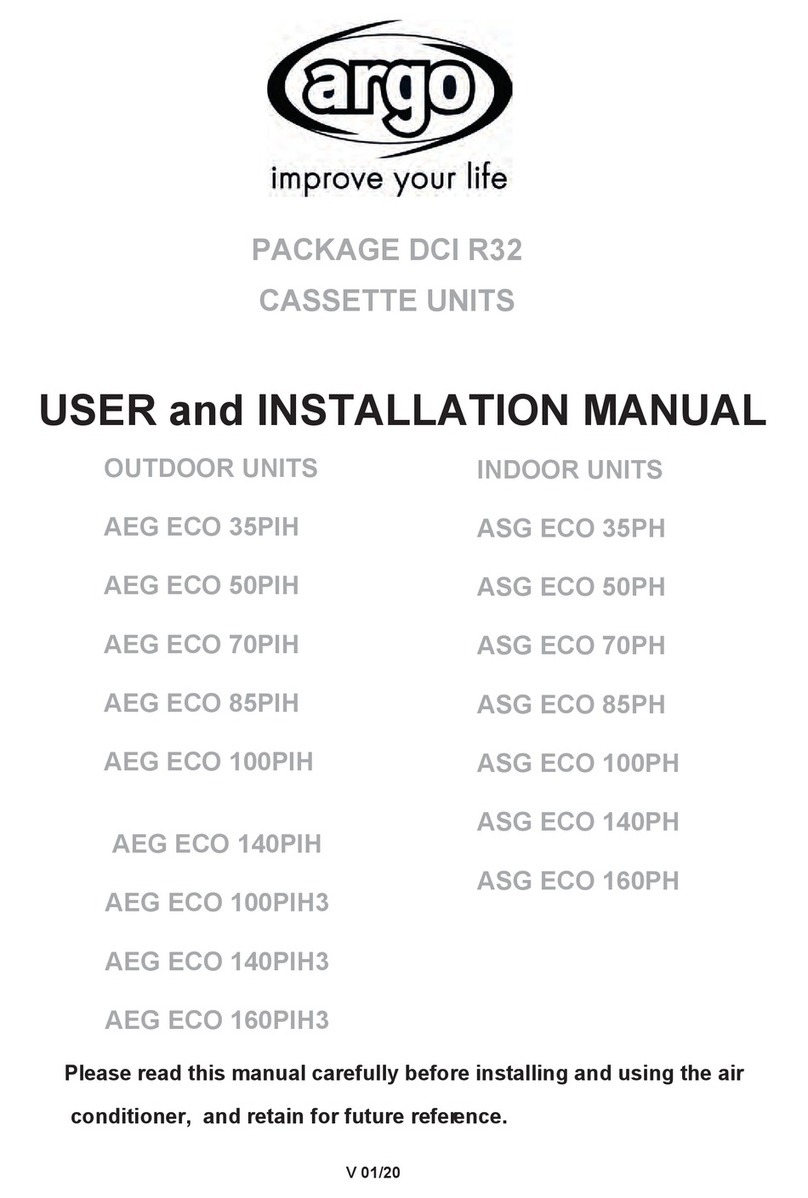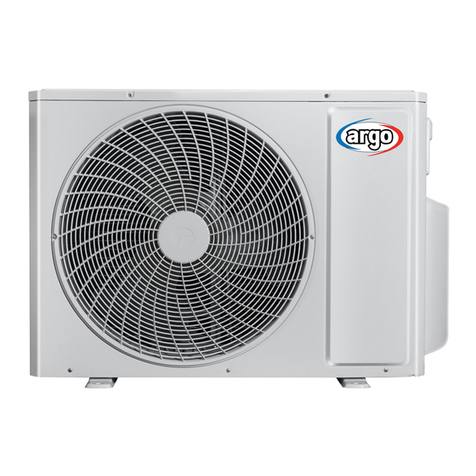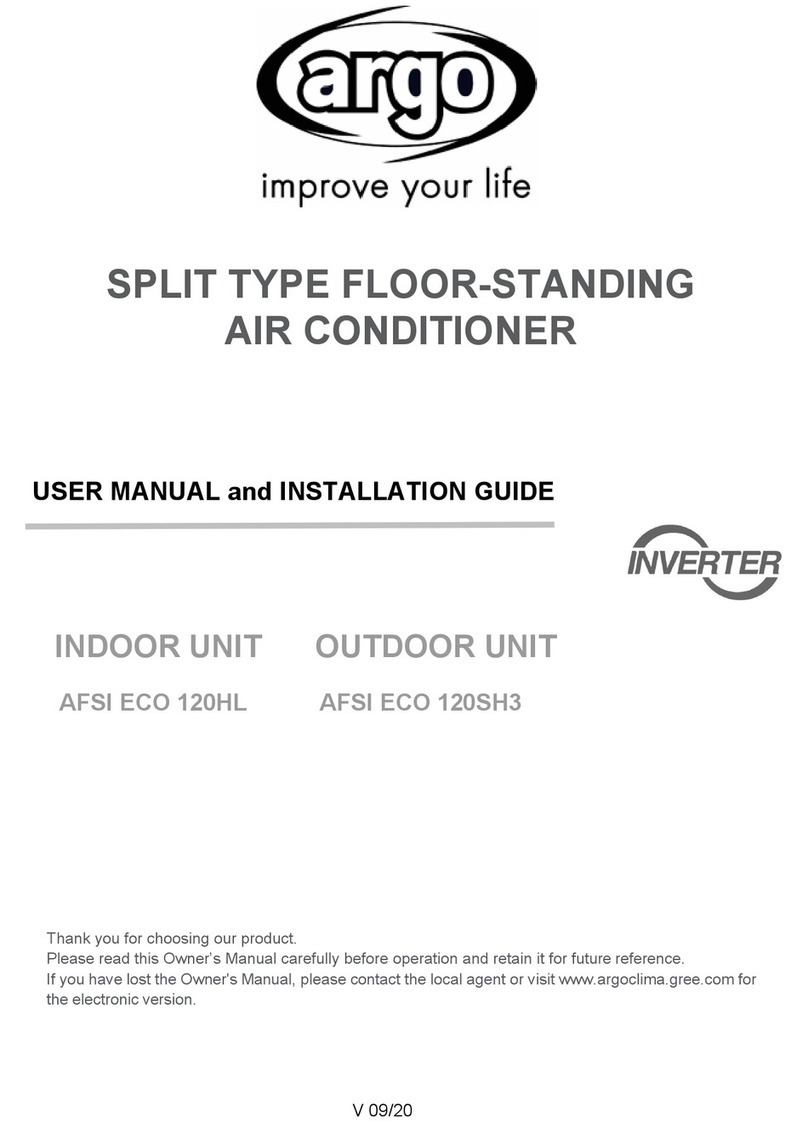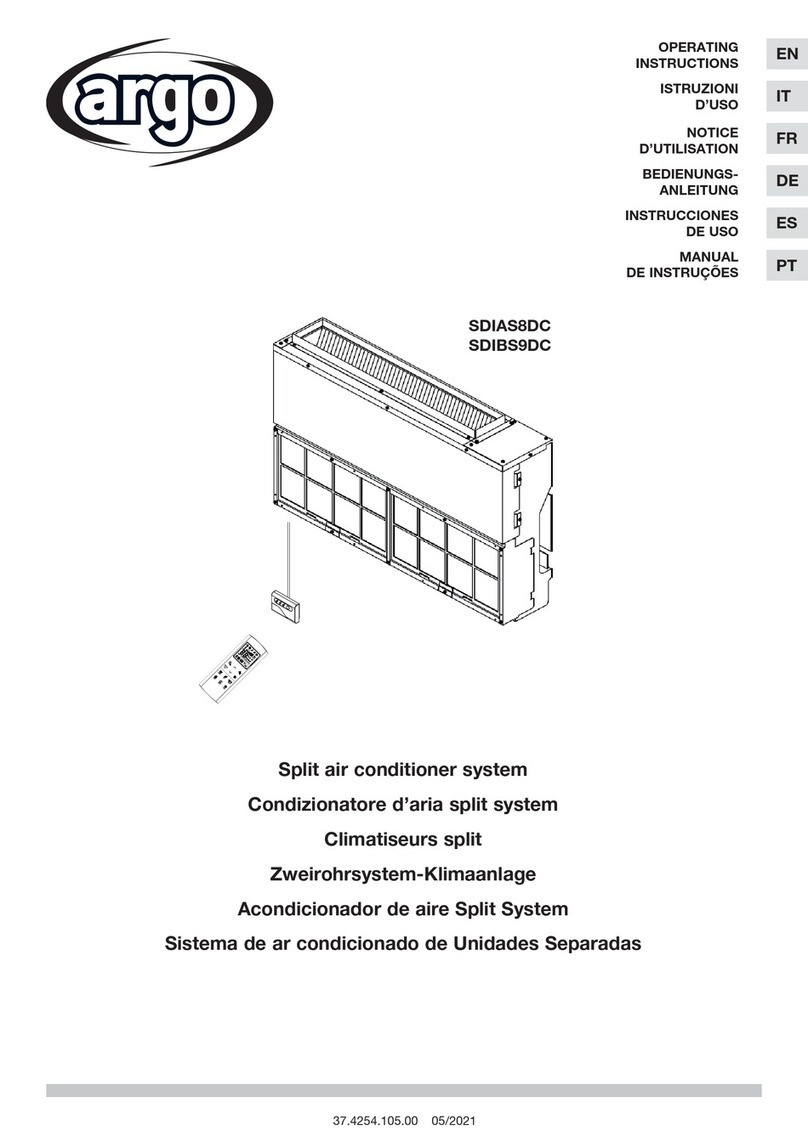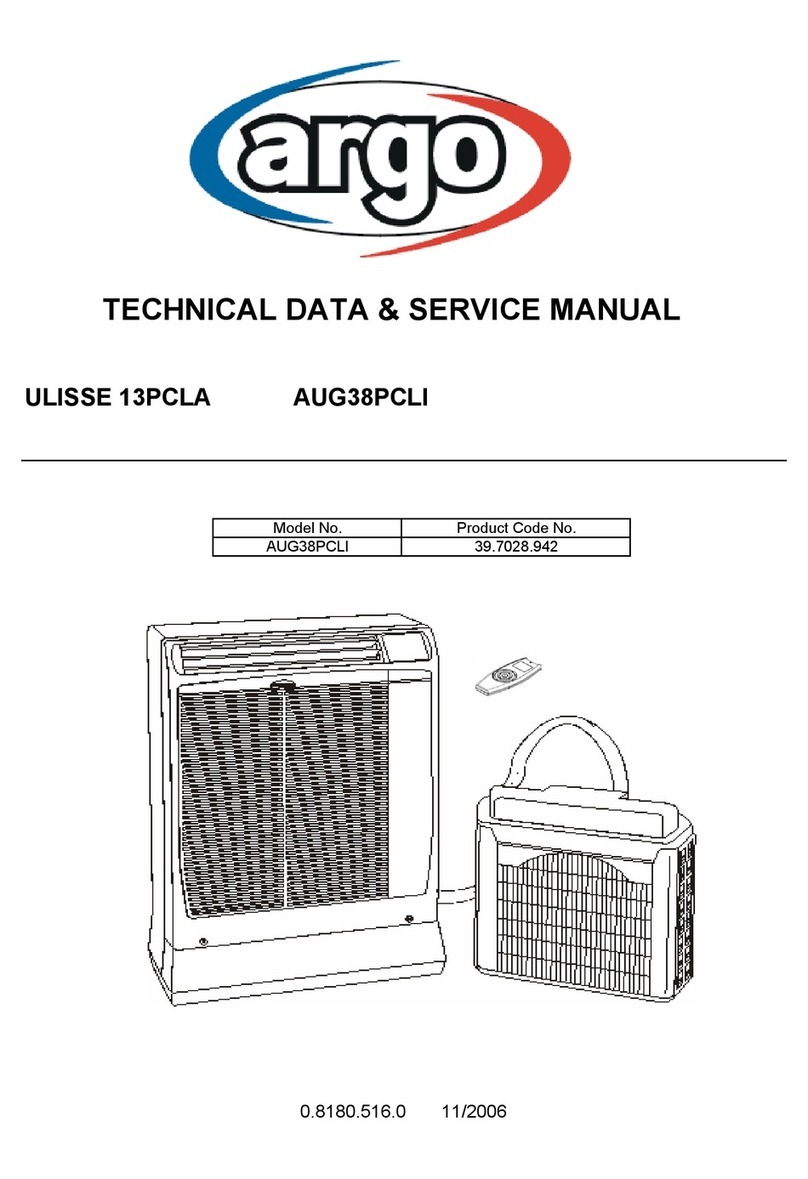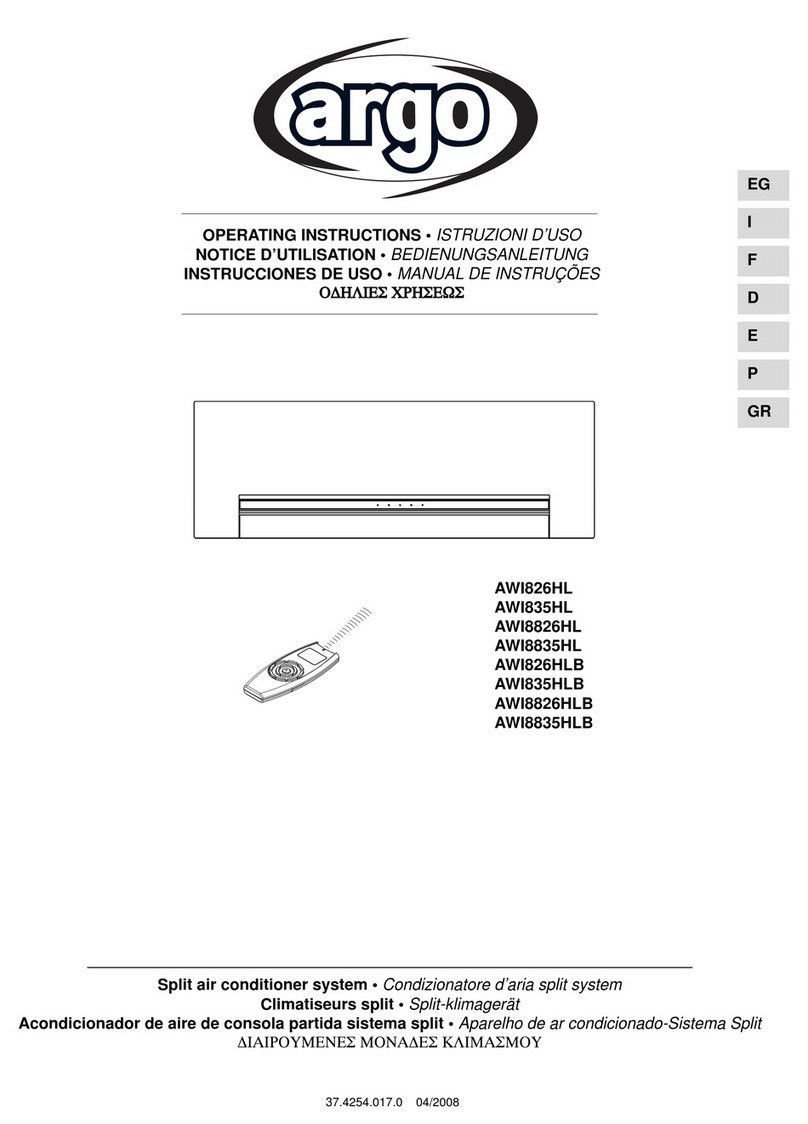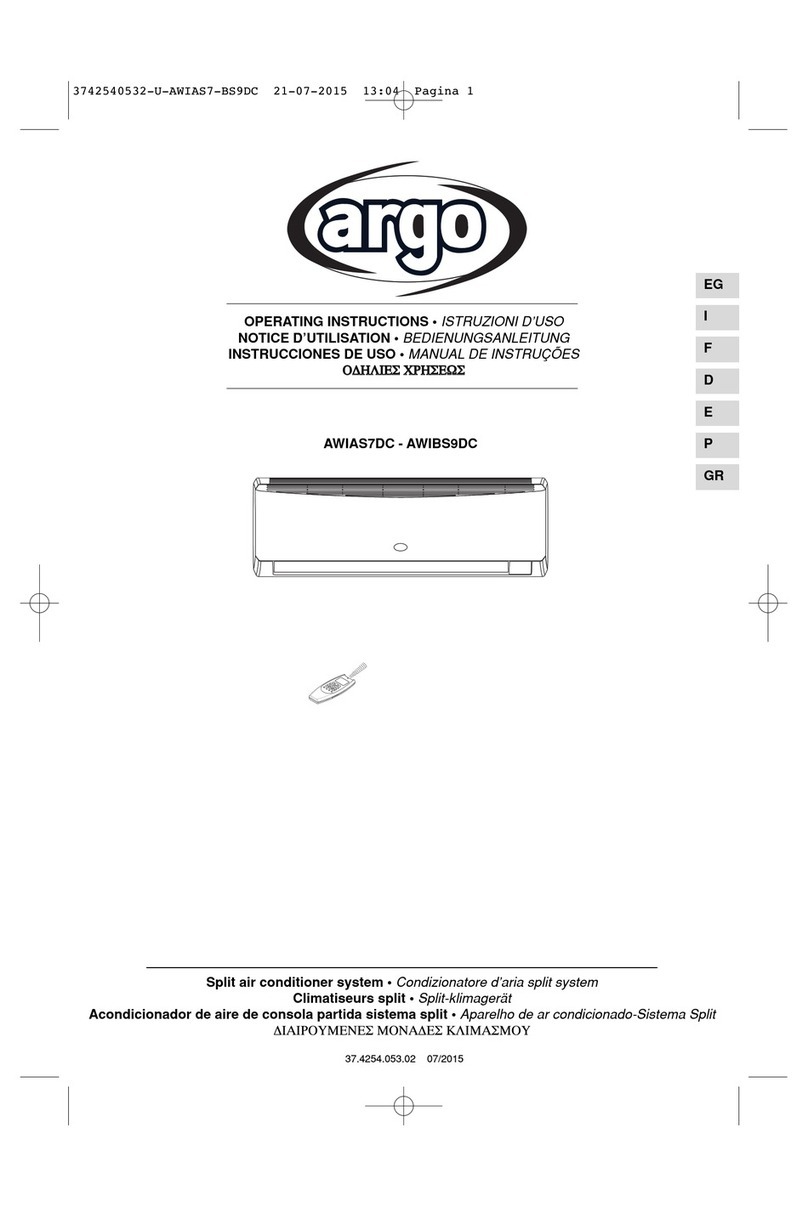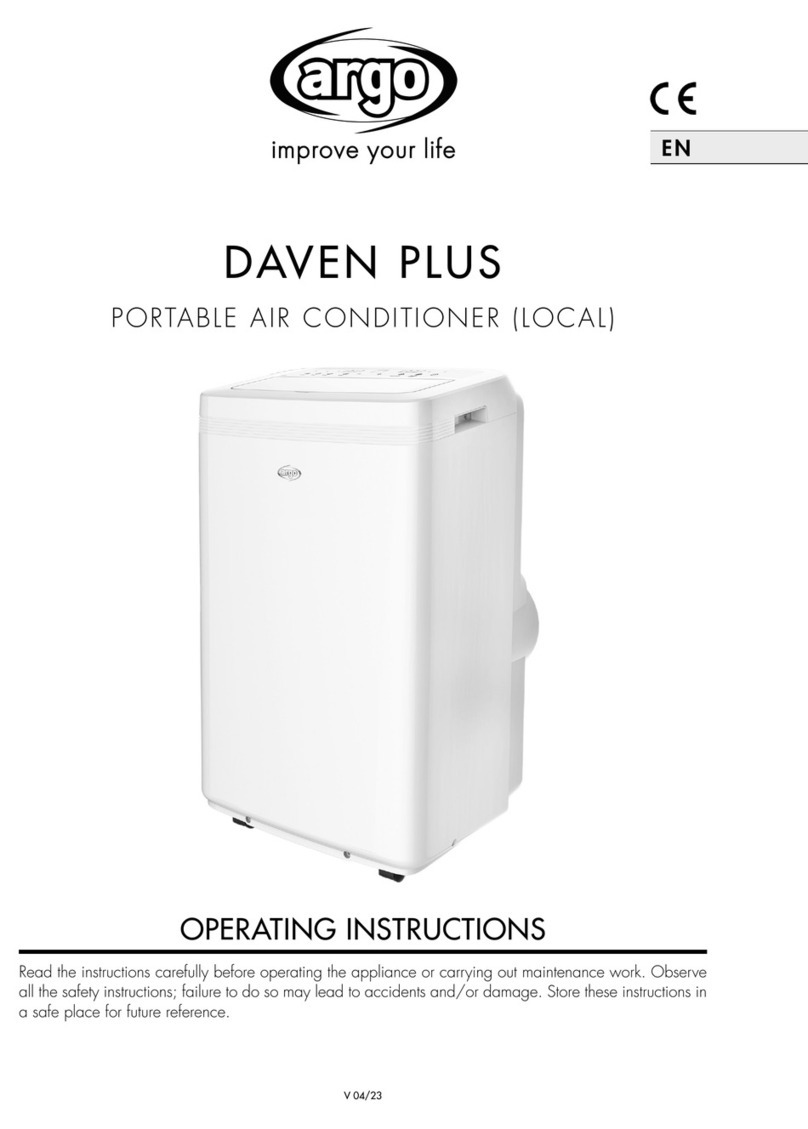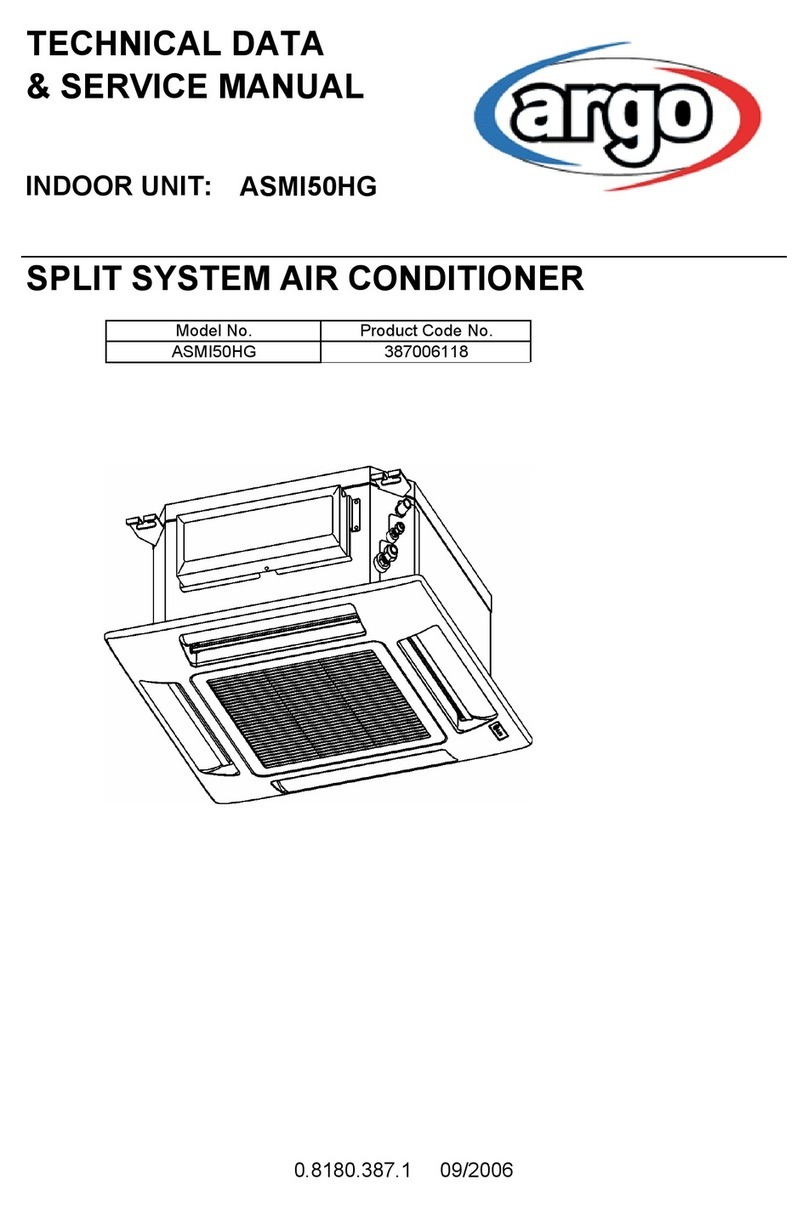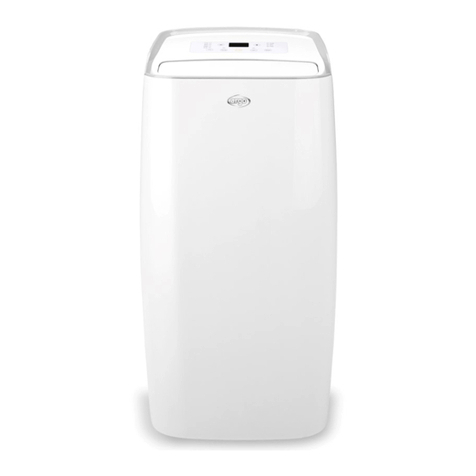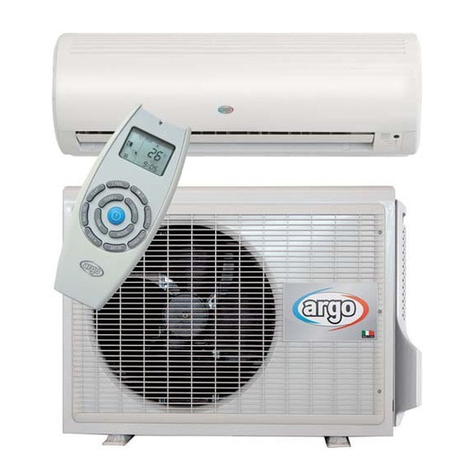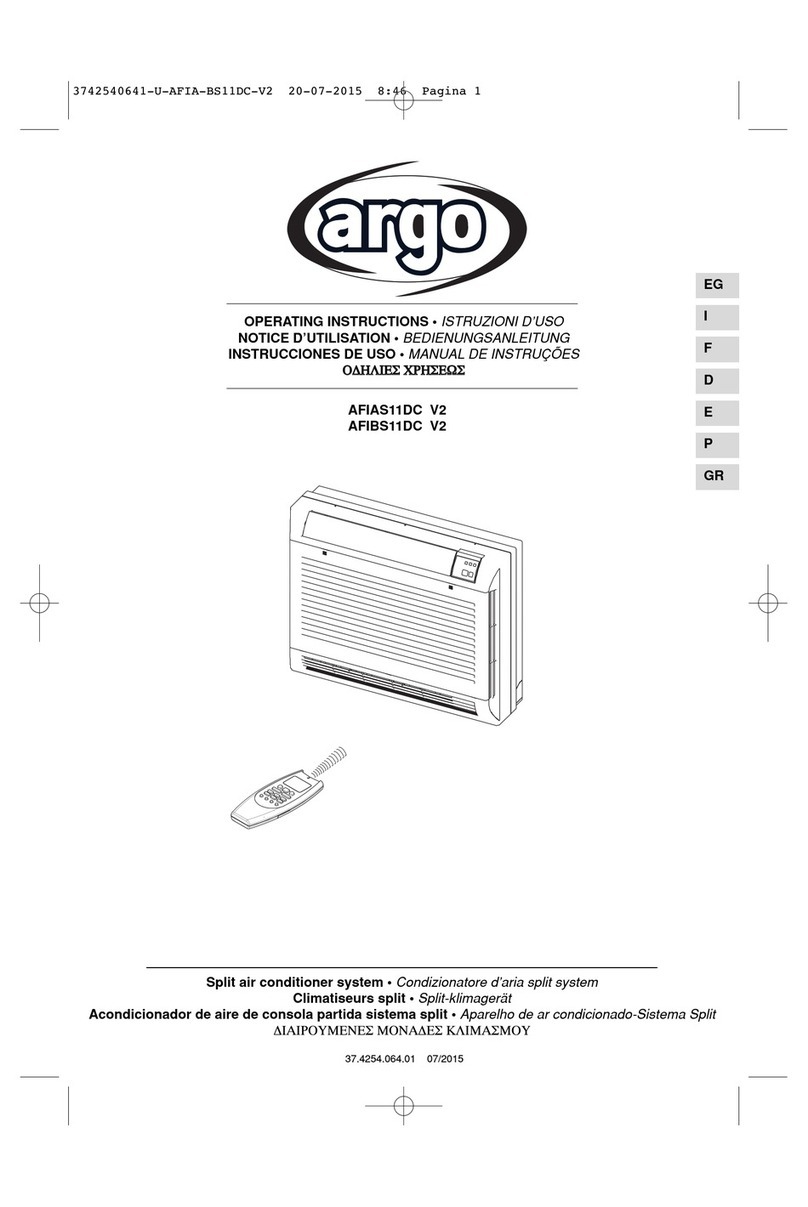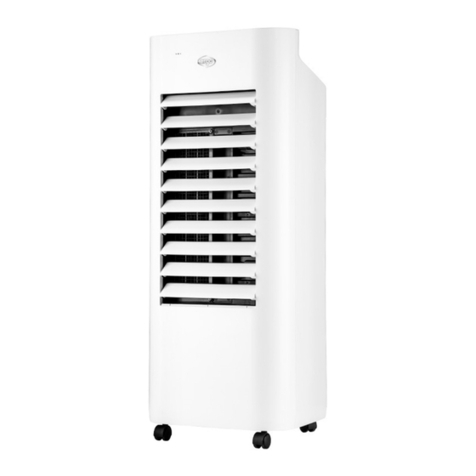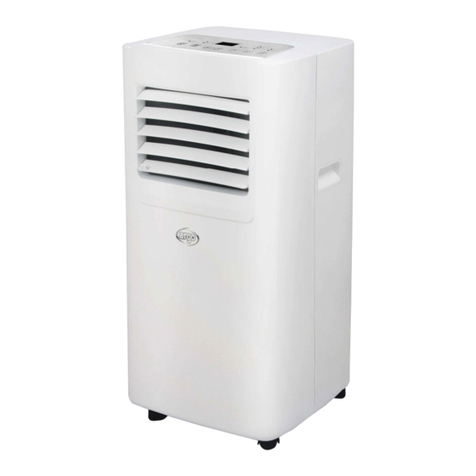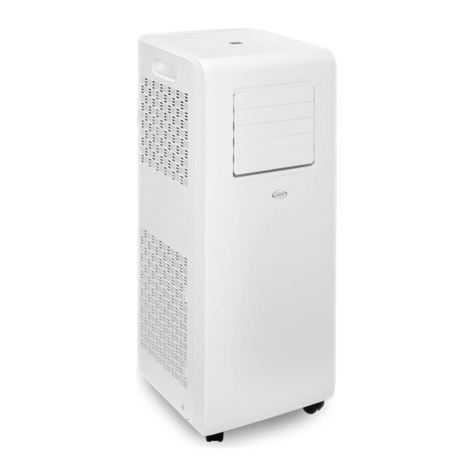GB
4
SAFETY INSTRUCTIONS
lRead this booklet carefully before using this air
conditioner. If you still have any difficulties or
problems, consult your dealer for help.
lThis air conditioner is designed to give you
comfortable room conditions. Use this only for its
intended purpose as described in this Instruction
Manual.
lNever use or store gasoline or other flammable vapor or
liquid near the air conditioner. It is very dangerous.
lNever install electrical equipment, which is not
protected with IPX1 protection (protection against
vertical water drop), under the unit.
lThe manufacturer assumes no responsabilities if the
safety regulations or local codes are not observed.
lNever use the power main switch to start or stop the
air conditioner: always use the ON/OFF button on the
remote control unit or the selector switch on the unit.
lDo not stick anything into the air outlet of the air
conditioner. This is dangerous because the fan is
rotating at high speed.
lDo not let children play with the air conditioner.
lDo not cool the room too much if babies or invalids
are present.
WARNING
CAUTION
INSTALLATION LOCATION
lWe recommend this air conditioner to be installed
properly by qualified installation technicians in
accordance with the installation instructions provided
with the unit.
lDo not install this air conditioner where there are
fumes or flammable gases, or in an extremely humid
space such as a green house.
lDo not install the air conditioner where excessively
high heat-generating objects are placed.
lDo not install the air conditioner where the
atmosphere is extremely damp or humid (e.g.
greenhouse or laundry) it could be wetted by drops
of water (i.e. in laundries).
lTo protect the air conditioner from heavy corrosion,
avoid installing the outdoor unit where salty sea
water can splash directly onto it or in sulphurous air
near a spa.
WARNING
ELETRICAL REQUIREMENTS
lBefore installation, check that the voltage of the electric
supply in your home or office is the same as the voltage
shown on the nameplate.
lAll wiring must conform to the local electrical codes.
Consult your dealer or a qualified electrician for details.
lEach unit must be properly grounded with a ground (or
earth) wire or through the supply wiring.
lWiring must be done by a qualified electrician.
HOW TO INSTALL BATTERIES
lRemove trhe lid in the rear part of the remote control unit
and check the settings of the four microswitches as
shown below:
TEMPERATURE SENSOR SELECTOR
lUnder normal conditions the room temperature is detected
and checked by the temperature sensor placed in the
remote controller (I FEEL icon displayed ).This function
is designed to provide a confortable room temperature by
transmitting the temperature control command from the
location next to you. Therefore, when using this function,
the remote control should always be pointed at the air
conditioner.
lIt is possible to disable the remote controller room sensor
pressing the I FEEL button. In this case the I FEEL icon
on the remote controller display lights off and the sensor
placed in the air conditioner becomes active.
USING THE REMOTE CONTROL UNIT
lInsert two AAA alkaline batteries of 1,5 V-DC making
sure that point in the direction marked in the battery
compartment.The displayed time flashes.
Press the SEL TYPE button.
Remote controller is now ready for operation.
lThe batteries last about six months. Depending on how
much you use the remote control unit.
Remove the batteries if you do not use the remote control
unit for more than one month.
Replace the batteries when the remote control unit lamp
fails to light, or when the air conditioner does not receive
the remote control unit signals.
lThe batteries of the remote control contain polluted
substances. Exhausted batteries must be disposed
according to the laws in force.
OPERATION WITH THE REMOTE CONTROL UNIT
When using the remote control unit, always point the unit
transmitter head directly at the air conditioner receiver.
HOW TO TURN ON THE AIR CONDITIONER
Press the ON/OFF button to turn the air conditioner on.
The operation lamp will light up, indicating the unit is in
operation.
The remote control unit sends the temperature signal
at any key pressing and automatically every five
minutes. If, due to some troubles, the signal from the
remote control is no longer detected, the air conditioner
keeps operating using the temperature sensor of the
indoor unit to control the room temperature. In this
case, the temperature around the remote control unit
may differ from the temperature detected in the air
conditioner position.
NOTE
SWITCHES
